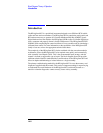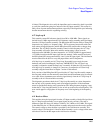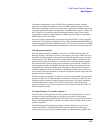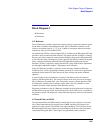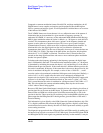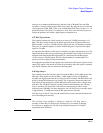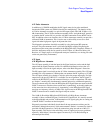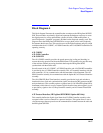
14-10
Block Diagram Theory of Operation
Block Diagram 2
Compared to common modulation formats like AM, FM, and phase modulation, the 0.3
GMSK format is more complex and requires special equipment (like the HP/Agilent
8922) to generate and analyze signals. A brief explanation is included here as an overview
of the format of 0.3 GMSK.
The 0.3 GMSK format was chosen because it is very efficient in terms of the amount of
information that can be transmitted in a given amount of frequency spectrum. To
understand 0.3 GMSK, it is necessary to first understand MSK (Minimum Shift Keying).
MSK is phase modulation where the carrier is shifted + or - 90 degrees as each data bit is
received. This instantaneous phase shift causes “splatter” in the frequency domain and
appears as noise spikes on a spectrum analyzer. This is not a good system for digital
communications because it would cause noise in adjacent communication channels. To
eliminate this noise, the digital signals are first low-pass filtered to eliminate the
instantaneous phase shifts. The filter cut-off frequency chosen was 0.3 times the data rate
270.833 kHz = 81.25 kHz. The shape of the filter chosen was Gaussian, which explains
where the “G” in “0.3 GMSK” was derived. The effect of the 0.3 Gaussian filter is to
smooth out the sharp digital transitions and causes a more continuous phase modulation
that has low spectral splatter.
To further reduce the frequency splattering in the frequency spectrum, the digital input
data is “Differentially Encoded”. This means that the modulation (either + or - 90 degrees)
is determined by examining the current data input (1 or 0) and deciding if it is the same or
different than the previous data bit. If the current data bit is different than the previous bit,
the carrier is modulated -90 degrees; if the current data is the same as the previous bit, the
carrier is modulated +90 degrees. For example, a series of data…01010101.…, would
cause the carrier to be continuously modulated -90 degrees each clock period. Similarly, a
series of all 1’s or all 0’s would cause the carrier to be continuously modulated +90
degrees each clock period. This can be seen by viewing the HP/Agilent 8922 output with
constant 1 or 0 data input. With modulation turned on, the carrier is “offset” +67.7 kHz.
This is caused because the carrier is modulated at +90 degrees times 270.833 kHz = 67.7
kHz. This also explains the common misunderstanding about why the carrier seems
“offset” when no data is being applied.
Because of ISI (Inter Symbol Interference) caused by the low-pass filtering, the effects of
previous data bits can be seen on the RF output. To generate this complex signal, the A5
Premod Filter and NSM uses a shift register to hold the current data bit, as well as the
previous 6 data bits. These seven bits are used along with a look-up ROM to find the exact
phase output that the HP/Agilent 8922 should generate, given the effects of ISI and 0.3
Gaussian filtering.
This information is given digitally to the NSM (Numerical Synthesis Machine) chip. This
IC is a digital synthesizer that converts the digital input data into a digitally coded analog
waveform that can be used to directly drive the A27 DAC/Upconverter assembly to get the
correct analog waveform.
The diagnostics program checks the A5 Premod Filter and NSM assembly by making sure
the internal loop can lock to an external 270.833 kHz signal. Since the HP/Agilent 8922B
and HP/Agilent 8922G clock signals are generated internally in other modules, it may be



